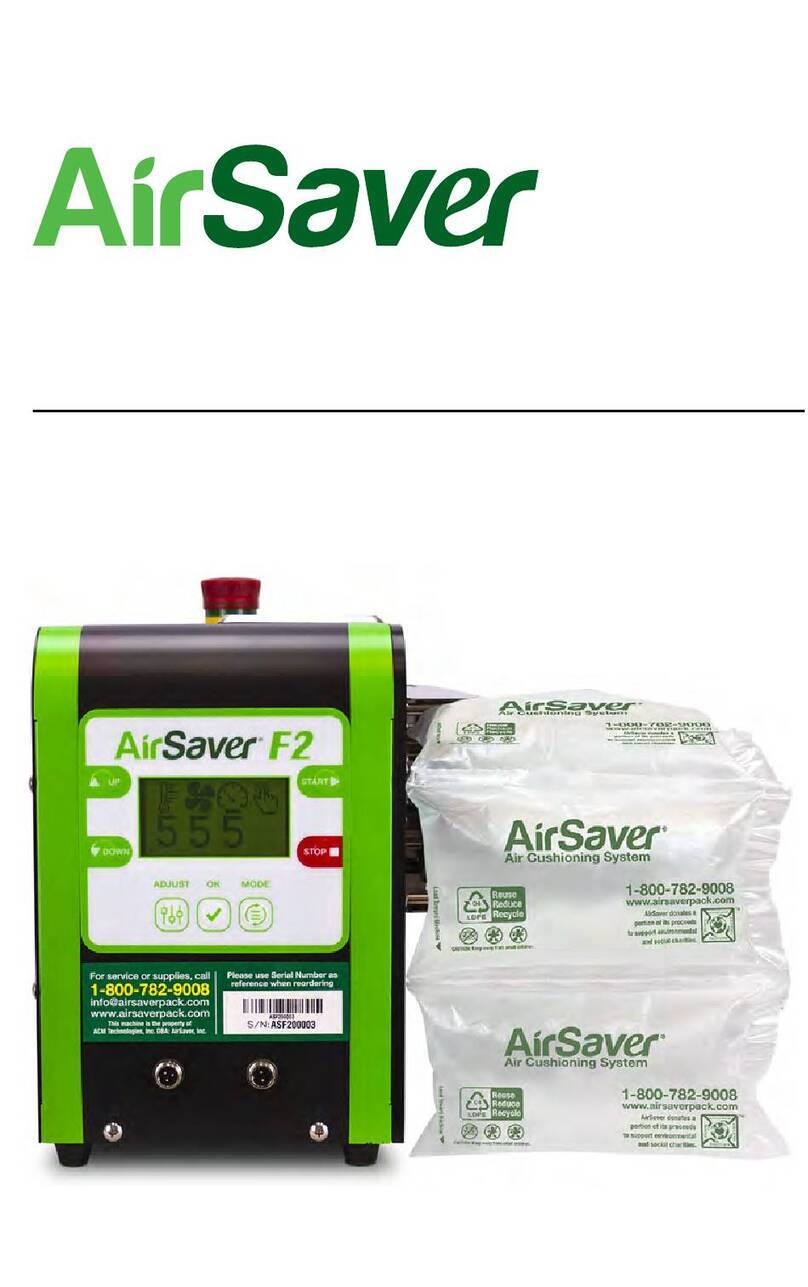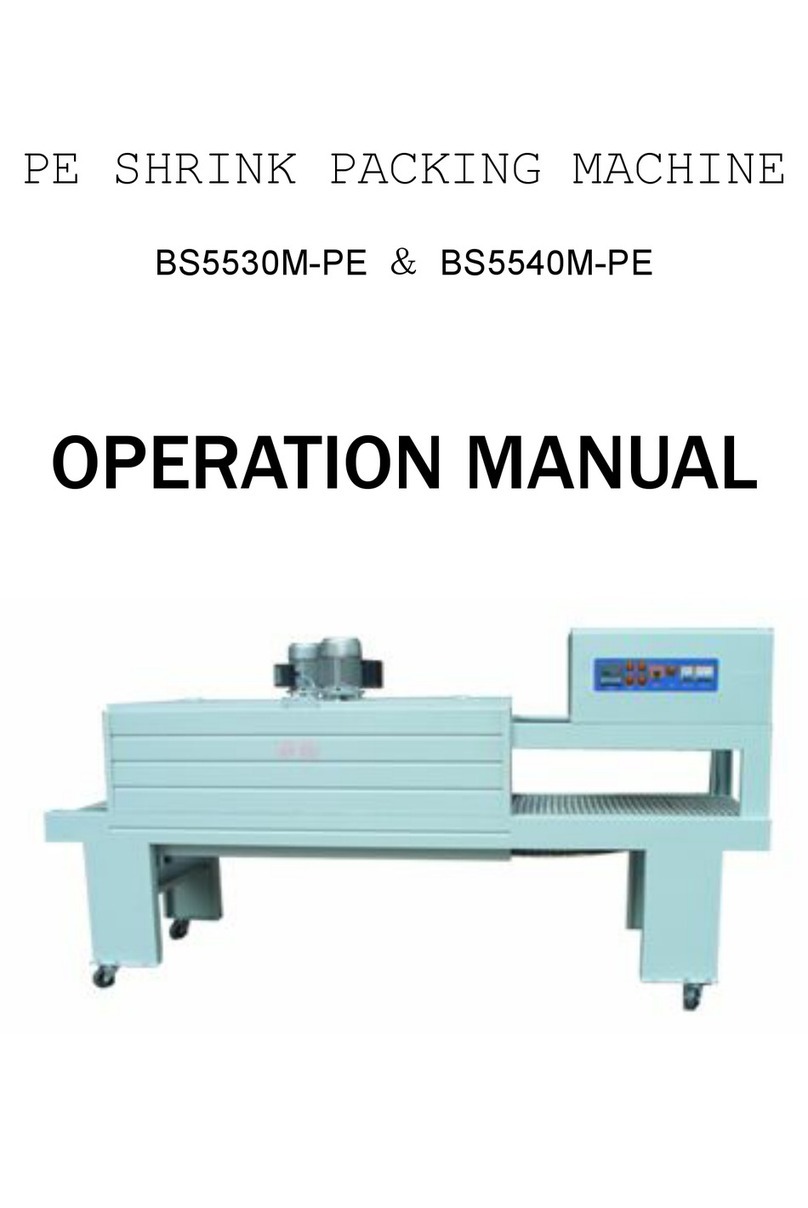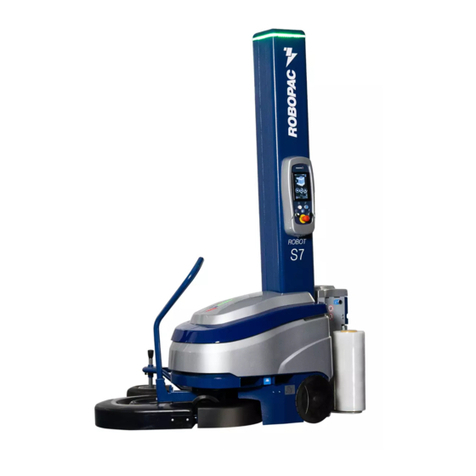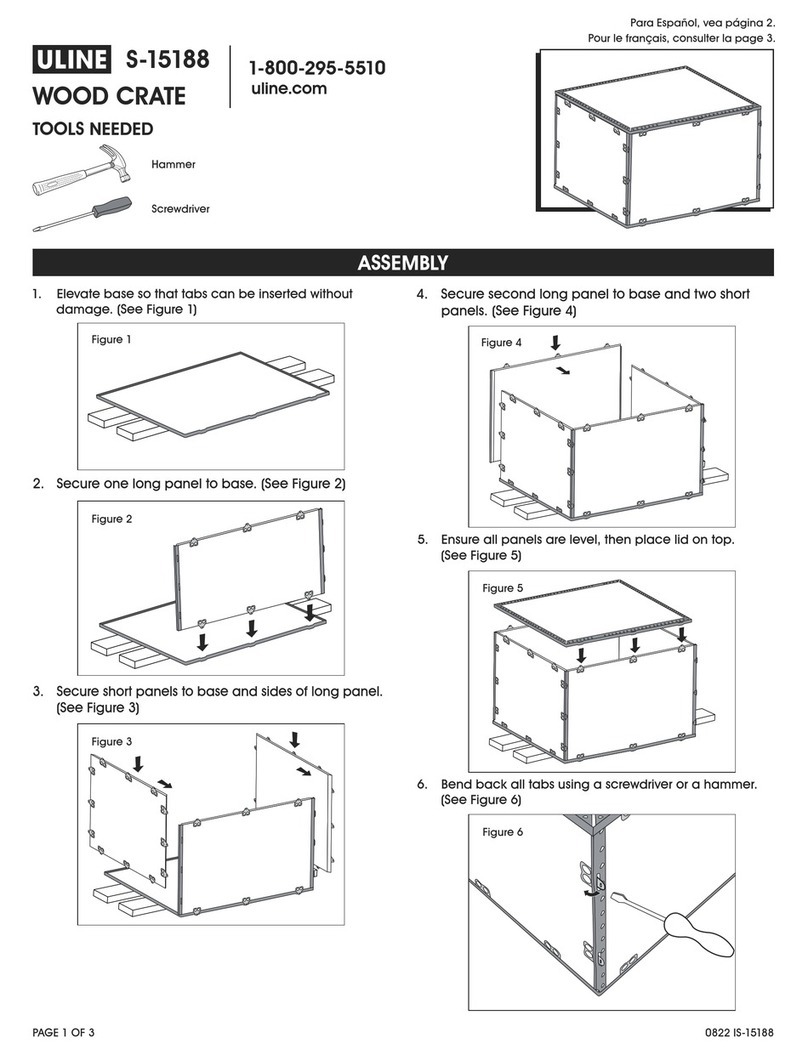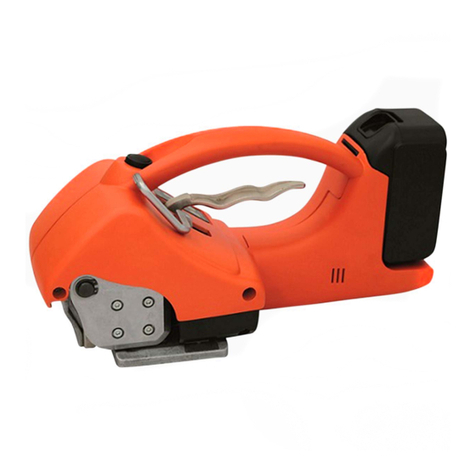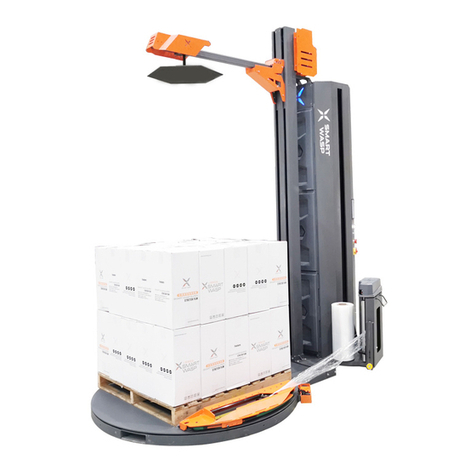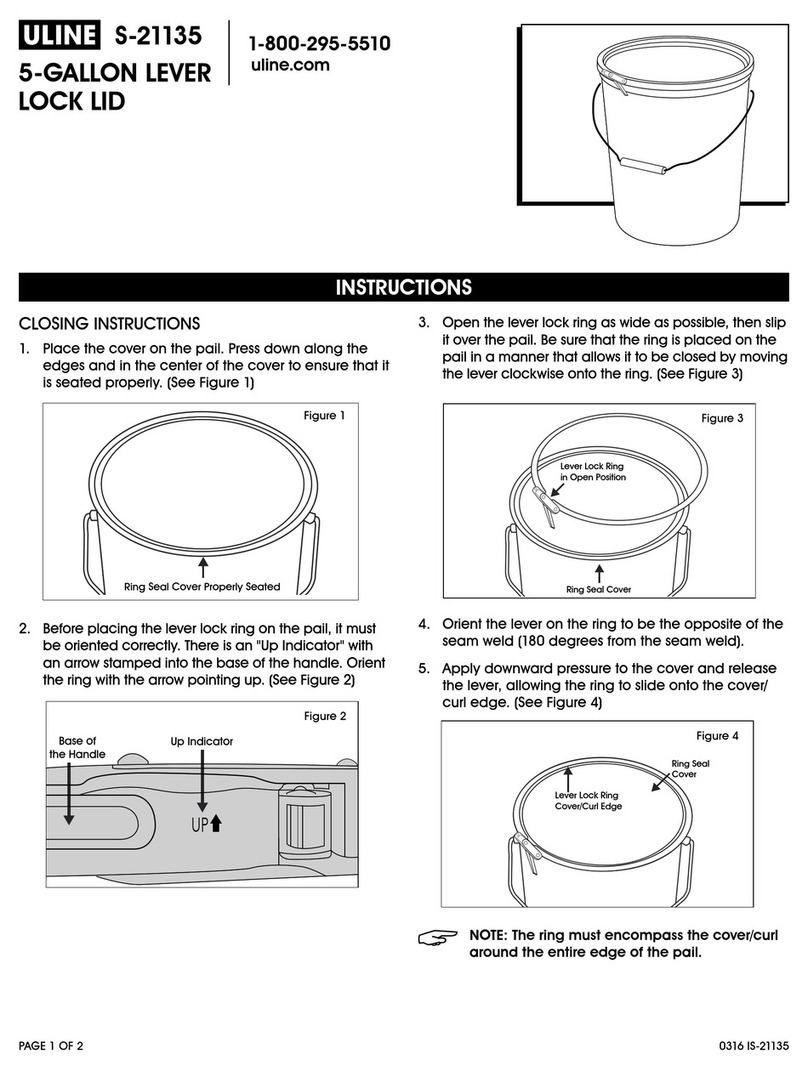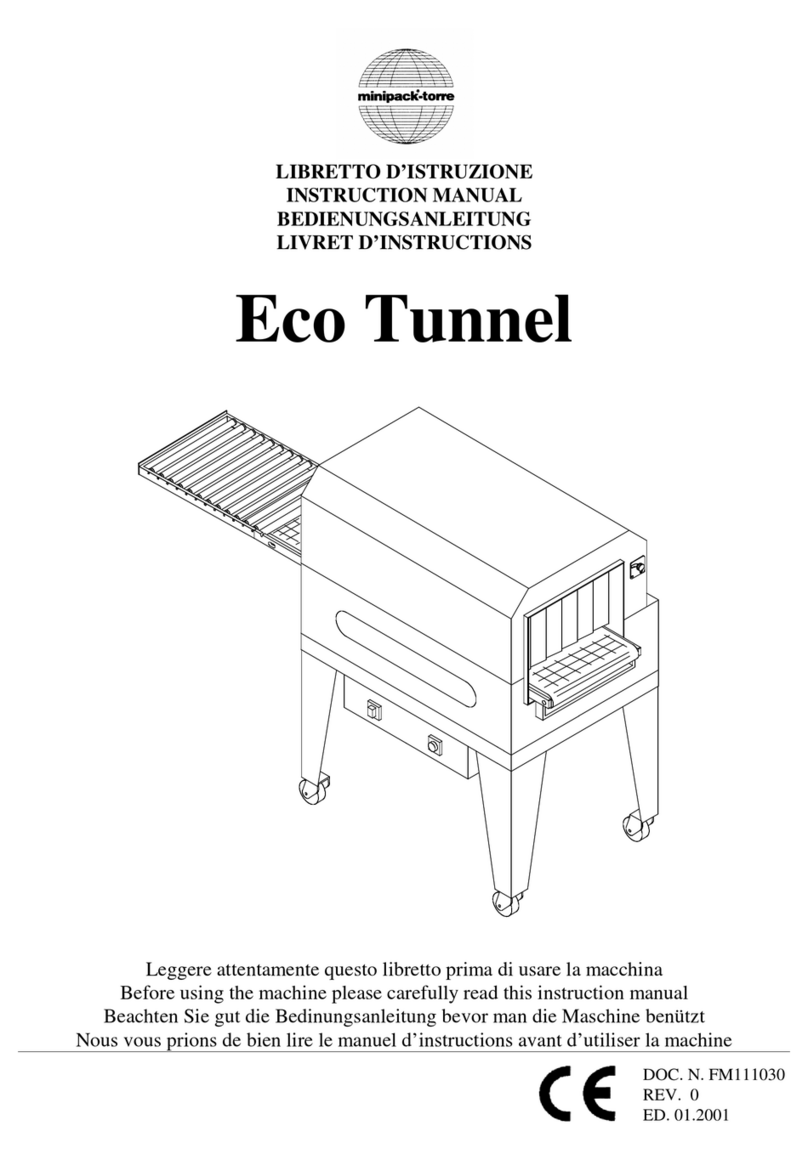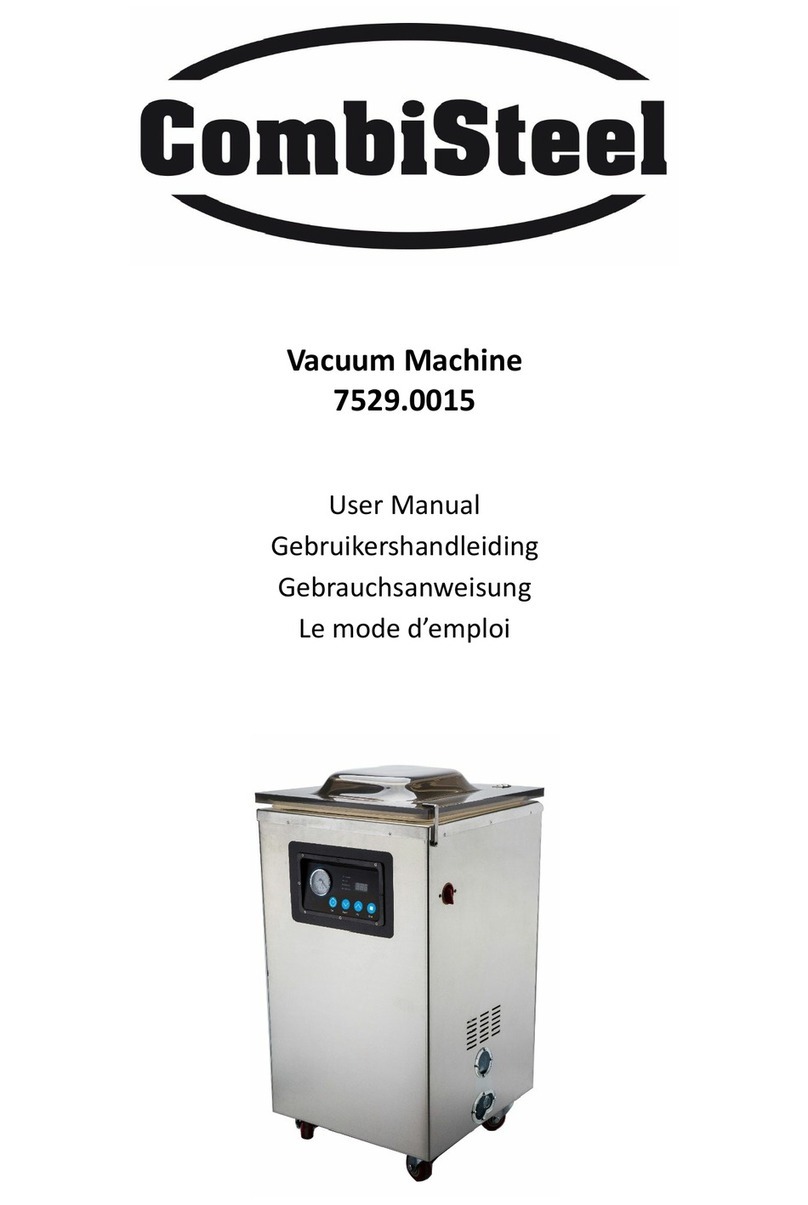
Timing and Adjusting the Model VV510 Magic Finger Bagger
TIMING THE SURE-FALL MECHANISM
The Magic Finger Bagger comes from the factory with the Sure-Fall timing correctly set. These
instructions are given in case of a drive chain breakage or some other unusual event that affects the
timing of the machine. Remove the ice from the Hopper and run the Magic Finger Bagger until the
Volumetric Drum’s cavity rotates over the Ice Chute and the Sure-Fall mechanism operates. Verify that
the pushing side of the cavity lines up with the beginning of the Ice Chute. If it does not line up, loosen
the three screws, item 76 on the Top Assembly parts list #B-0000 that clamp the cam plate, item 46 to
the modified sprocket, item 36. Rotate the cam plate until it is in the correct position to allow the Sure-
Fall mechanism to operate when the pushing side of the cavity in the Volumetric Drum lines up with the
beginning of the Ice Chute. Retighten the screws and recheck the timing. Additional information about
switch locations, this and following steps can be found on the Adjustment / Maintenance Schedule
drawing B-0009.
TIMING THE MAGIC FINGER MECHANISM
The Magic Finger Bagger only comes from the factory with the correct Magic Finger mechanism
settings if a wicket of the customer’s bags had been sent to the factory for testing prior to shipping.
These instructions are given in case of bag size changes or start-up from scratch. If you are uncertain
about the timing of the Magic Finger mechanism (the J-shaped hook on the front of the machine) it is
best to loosen the setscrews, item 13 on Magic Finger Assembly drawing #B0043. These hold the drive
lever, item 2 to the main shaft, item 8. With a wicket of bags installed, run the Magic Finger Bagger
until the all-threaded connecting rod, item 11 extends forward, out of the main guard the farthest. Stop
the Magic Finger Bagger. When the drive lever is pushed to the maximum forward position the Magic
Finger wand will be at the maximum rearward position. To set the correct item 1, Magic Finger wand
position, move the wand rearward until it is at a location ½” from the position that the ice chute door
will be when it opens fully. Retighten the setscrews in the drive lever. Run the Magic Finger Bagger
with the Blower Fan on until the first bag on the wicket is opened up. Check that the fingers at the
bottom of the wand are pointing forward and that they contact about 1 ½” down from the forward most,
inside lip of the opened bag. To adjust, loosen the setscrews, item 13 in the wand attachment block,
item 10 and set the height of the wand to the correct position. Retighten the setscrews. Note: The wand
should be ½” above the tops of the feeder plates on the Hamer 125 ring closer.
ADJUSTING THE STROKE ON THE MAGIC FINGER MECHANISM
If the stroke (length of travel) that the Magic Finger wand moves is too long or short it can be adjusted
by loosening the setscrews, item 13 on Magic Finger Assembly drawing #B0043 that hold the drive
shaft attachment block, item 7 to the drive lever, item 2. If it is moved upward (away from the main
shaft, item 8) it will shorten the stroke. If the drive shaft attachment block is moved downward (towards
the main shaft, item 8) it will lengthen the stroke. Retighten the setscrews and recheck the stroke. Note:
The wand should move forward and take the ice bag to a position about 1 ½” passed the tips of the tips
of the feeder plates on the Hamer 125 bag closer.
ADJUSTING THE HEIGHT OF THE ICE BAG SHELF
Run the Magic Finger Bagger with the Blower Fan on until the first bag on the wicket is opened
completely. The bottom of the bag should be on the top of the Bag Shelf Assembly. To adjust, loosen
the two screws, item 5 on Bag Shelf Assembly drawing #B-0040-C, move to the desired height (while
keeping it level) and retighten screws.
